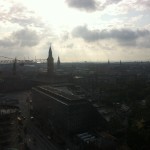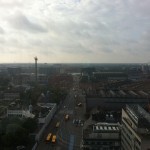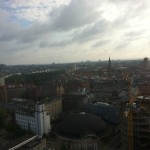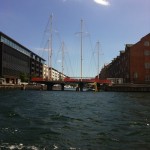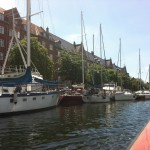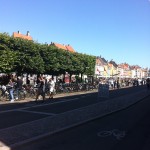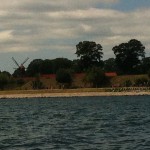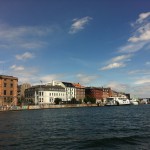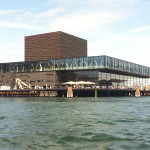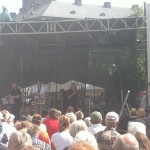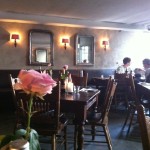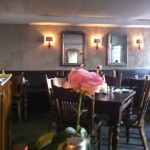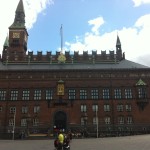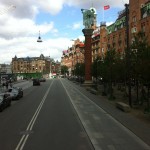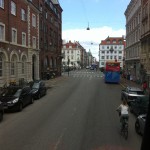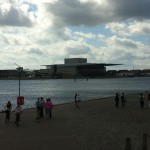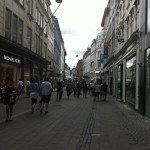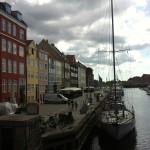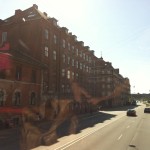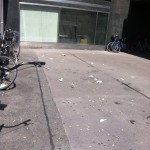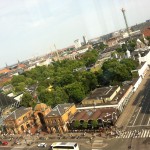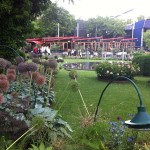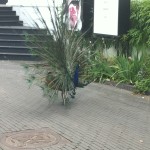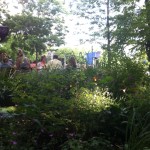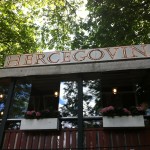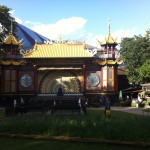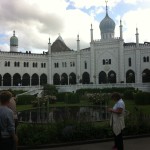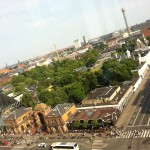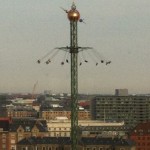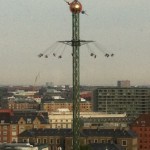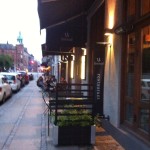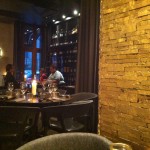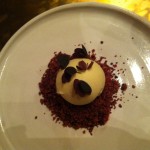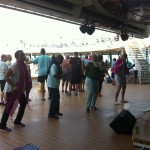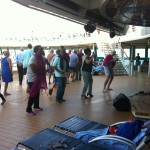Our Denmark road-trip begins today! Yay—so thrilled!!!
We grab a quick breakfast, store our luggage, walk around the corner to Hertz, and pickup our rental car. It’s rush hour and it takes a good forty minutes to weave our way out of the city proper, and onto the highway.
The Viking and I are both struck by the hordes of cyclists everywhere. The Danes bike, bike, and bike some more. There are bike lanes and bike stands everywhere, and, as I’ve noted before, the cyclists have the right of way. What that means is the Danes are fit. The only overweight people we’ve seen are obviously tourists (and North American if you go by the flags on purses and backpacks). In south Florida, you take your life in your hands if you attempt biking on major roads.
We’re both surprised by the landscape change within minutes of driving on the freeway. Copenhagen is flat, but the second we exit the capital, rolling hills peppered with lush, verdant farms dominate the landscape.
Until this trip, I never realized that Denmark is actually composed of the peninsula of Jutland, 12 major islands (Zealand, Funen, Jutland, Amager, Lolland, Als, Falster, Bornholm, Samsø , Ærø, Tåsinge, and Mors), and over 449 (the number is dynamic as new islands form and other disappear according to sedimentation) smaller islands (of which 74 are inhabited). Here’s a map of the country:
In addition, Greenland and the Faroe Islands, are also considered part of the Kingdom of Denmark (although absolute monarchy was abolished in 1849). Iceland also once belonged to Denmark. We’re planning to visit several Viking sites on our road-trip, and the first one, Ribe VikingCenter, is located on Denmark’s west coast on the island of Jutland. This is our planned route over the next four days:
The major islands of Denmark are connected by bridges. When we cross over from Zealand to Funen, this is what we saw from the bridge:
Windmills in the sea! A first sighting sighting for both of us.
The Ribe VikingCenter is located near the old Viking trading center of Ribe, which served as the conduit for trade with the Middle East and the Mediterranean. The ancient site was excavated and a new center built to the specifications of what was found during the excavation. Every summer, the Viking village in the center is occupied by people who live and practice the trades of Vikings during the tenth century. These are the statues at the entrance to the Ribe Viking Center:
We stayed at the center for over three hours. Both the Viking and I were completely enthralled. Tomorrow’s blog will be devoted to pics and experiences at Ribe—I minted a gold coin!!! Yikes—they let me near fire 🙂





